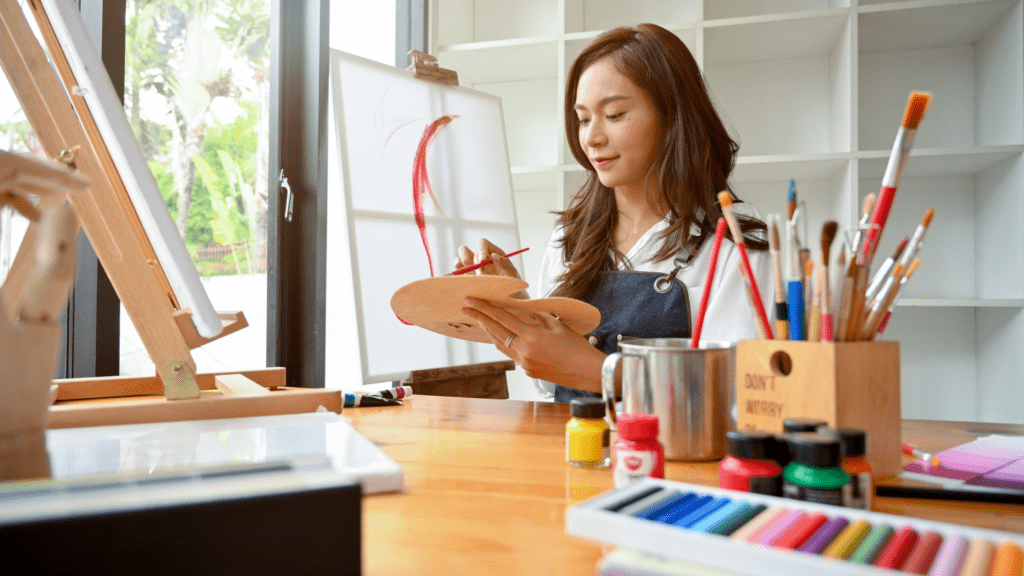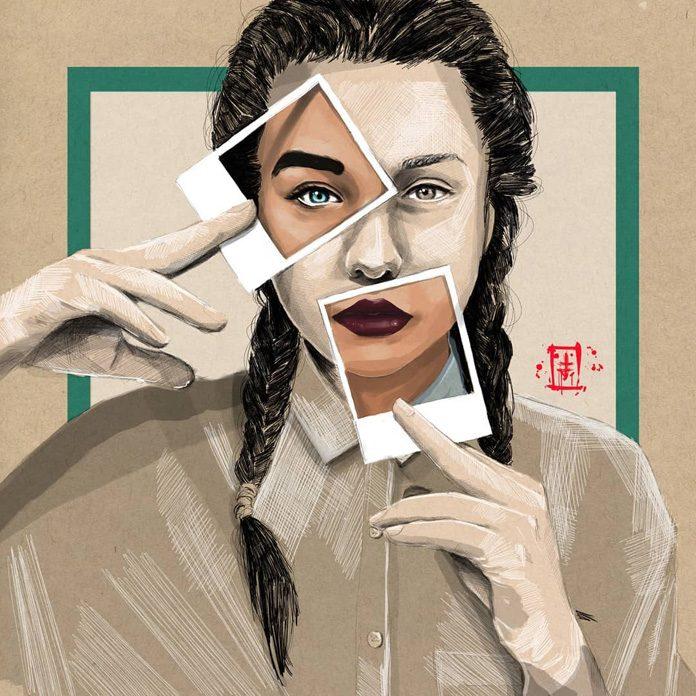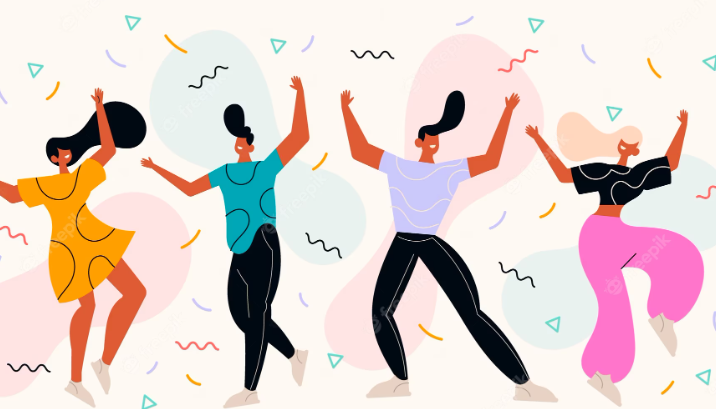
We’re all creatively gifted, just in different ways. You have a signature creative style, whether you’re an artist or an accountant. Having a style that is yours can be empowering and set you apart from everyone else. However, it does not emerge overnight and requires exploration and experimentation. These six ways will help you develop your creative style and voice that sets you apart from others.
“Creativity is seeing what others see and thinking what no one else ever thought.”
— Albert Einstein
I recently returned from a vacation to Walt Disney World in Florida. While I’m a frequent visitor, this visit felt different. I noticed details that most people usually don’t, contributing to the immersive experience in the parks.
I noticed everything from the color of the flowers and impeccable landscape to the uniquely-designed queues at classic rides. One that really stood out was the Haunted Mansion in Magic Kingdom. Guests can solve mysterious riddles as they listen to the sinister voices of ghouls and ghosts while they wait in eerie gardens peppered with tombstones.
I wondered what thoughts went into these creations. I pictured a band of talented artists, thinkers, and builders gathering to brainstorm and talk through ideas to create an exceptional guest experience at Disney.
Encouraging a potpourri of talented individuals, each with their unique creative style and voice stems from the founder, Walt Disney. Throughout his career, Disney studied people and learned to motivate, inspire, and leverage their skills.
Disney regularly toured his studios to speak with employees and discover their passions. Kendra Trahan, author of “Disneyland Detective,” said, “Walt noticed that one of his artists, Blaine Gibson, had beautiful sculptures on his desk — sculptures that he made himself.
Blaine was a good artist and doing fine in his position, but Walt saw the passion for sculpting that Blaine had. Walt quickly reassigned Blaine to W.E.D. (known today as Imagineering).”
This philosophy of discovering and cultivating a person’s creative style is echoed by Joe Garlington, the former Vice President and creative lead of Interactive Projects at Walt Disney Imagineering. He was responsible for developing interactive attractions for Disney parks.
“I think there’s an awful lot of creatives who feel like they have to do what everybody else is doing,” he said during our interview on The Dream Catcher Podcast. “Don’t do that – follow your interests no matter what they are – eventually, they will come together to form a unique perspective, which will have more value than knowing what everyone else does.”
We’re all creatively gifted, just in different ways. All we need to do is figure out our strengths and gradually develop them while removing any creative roadblocks that may hinder our development.
What does it mean to ‘be creative’?

The term creativity is used frequently, both in the arts and other professions. As common as the usage is, the idea of creativity is varied. It includes several definitions and concepts, many of which are philosophical and obscure.
Some psychologists believe that every thought and behavior is an act of creativity. Others see creativity as a distinct ability that leads to the formation of new ideas and innovative ways to solve problems. A person who lacks creativity takes a more conventional approach, which hampers originality and innovation.
While training and practice are required to hone specific creative skills, like painting and writing, creative thinking is something we can all tap into at any time when we know how to channel it.
Creativity is about new ideas and thinking outside the box. Blogger Maria Popova calls creativity a “combinatorial force.”
“It’s our ability to tap into our ‘inner’ pool of resources – knowledge, insight, information, inspiration, and all the fragments populating our minds – that we’ve accumulated over the years just by being present and alive and awake to the world and to combine them in extraordinary new ways.”
To be creative is simply to say, “I have an idea,” and be curious enough to explore it. This perspective takes the pressure off fitting into the conventional mold that supposedly requires exceptional talent. Our imagination, reason, and experience are enough to fuel inspiration.
Overcoming ‘resistance’: common blocks to creativity
A limited definition of creativity is one of many things that obstructs our creative expression.
When someone is creatively blocked, they can’t access their inner genius and thought processes. They carry what Charles M. Shulz called “the burden of potential” — latent talent looking for an outlet to be seen, heard, and touched.
It’s common to face creative blocks. If you struggle to think outside the box, it’s a good idea to familiarize yourself with some of the more common creative blocks.
- Being stuck in a routine that boxes you in
- Not allowing yourself to play and follow your curiosity
- Burnout and stress
- Perfectionist tendencies
- Being afraid to take risks and get outside your comfort zone
- Personal problems
- Not knowing your creative strengths
- Low confidence and self-esteem
- Poverty or a “lack mentality.”
- Lack of discipline and structure
Getting over our inner blocks is crucial to the creative journey. We must walk through the dark to get to the other side where all answers lie.
But what is this mysterious force that stops creation from flowing?
Steven Pressfield, author of “The War of Art,” identifies it as the “resistance.” He describes it as a universal force with the sole mission of keeping things as they are, whether through inspiring fear and anxiety, diverting our attention with distractions, or amplifying our inner critics.
“Resistance cannot be seen, touched, heard, or smelled. But it can be felt. We experience it as an energy field radiating from a work-in-potential. It’s a repelling force. It’s negative. Its aim is to shove us away, distract us, prevent us from doing our work.”
Resistance is the anti-muse — a creative person’s kryptonite. It is never entirely gone, and if we are to make room for our inner artists, we must be ruthless and steadfast in our approach to swimming against its opposing tides.
Battling creative resistance is difficult. In my professional experience as a writer, I’ve noticed how often self-doubt can creep in and threaten to overwhelm me. Nothing is more daunting than staring at a blank page before typing the first sentence.
Any new creative outlet starts with inner tension as the mind teems with ideas, rich associations, and connections that demand your attention and discipline. At this high point, you must balance controlling the flow of ideas with allowing them to run wild.
As uncomfortable as this phase is, it’s important not to give up. Plough forward, knowing that frustration serves a purpose. What helped me was a change in my perspective.
Why it’s important to discover your creative style

Actress Phylicia Rashad observed that before a child begins to talk, they sing, and before they write, they draw, and as soon as they stand, they dance. All this points to one thing: creativity is innate. It’s fundamental to human nature.
Creativity allows you to share your unique expression and what lies within your interior world. You can show the things that matter to you and present ideas and perspectives in a new light, motivating others to see the world differently.
Whether it’s a writer penning a novel set in wartime Europe or a hip-hop dancer grooving to the rhythms of catchy tunes – they all provide a different lens through which we can see and appreciate the world around us.
People who witness our creative expression are not the only ones who benefit from our creative strengths. We stand to benefit tremendously by learning about our creative style. Studies show that it increases our well-being, boosts self-confidence and self-esteem, and gets us ahead professionally. It teaches us how to optimize our performance at work and in our personal lives.
The therapeutic nature of creative expression has led to the rise of art therapy. In this psycho-dynamic approach, the therapist and client use artistic expression to explore the inner self. Art therapy helps the client discover parts of themselves they were aware of and resolve any conflicts.
Another reason creativity is in high demand is the rise of artificial intelligence, robots, and automated work processes. This new technology is replacing many of the repetitive jobs that humans do. However, technology can’t replace creative thinking, which requires a sophisticated and intricate way of processing and connecting ideas.
Companies don’t want analysts who just crunch numbers. They want people who can analyze and develop solutions based on what they identify in the numbers. Media outlets are not looking for reporters who regurgitate facts and figures but for those who can narrate news in compelling ways that reach their audience.
Remember that you are an enormously creative person. All you need to begin walking the path of creativity is curiosity.
Following your curiosity allows you to go wherever your creativity takes you and be open to what you find on your adventure. It will fulfill an innate desire that we all share – to be self-actualized and appreciated for what we contribute to the world.
Six ways to develop your creative style

Whether you’re an artist or an accountant, you have a signature creative style. Having a style that is yours can be empowering and set you apart from everyone else. For example, spotting a Van Gogh or Claude Monet painting doesn’t take long. Their style is on display in the colors, patterns, and subjects they chose.
Knowing your creative style does not mean you’re locked into a particular way of expression. There’s room for consistent evolution, variability, and change while staying true to your signature style.
If you’re starting out, it’s important to note that your style does not emerge overnight. It requires exploration and experimentation. As you embark on your creative adventure, you’ll pick up on what comes naturally and what aligns with your values and message. You’ll also understand what it takes to communicate and create things that speak to others and evokes thought and emotion.
Here are six ways to develop your creative style:
1. Get creative exposure.
Exposing yourself to various art forms will get your creative juices flowing. Step out of the confines of your field and be inspired by what you witness. Look at music, movies, fashion, writing, and art. Collect things that resonate with you.
In time, you’ll notice commonalities in the themes and patterns of things you connect with. This holds clues about the passions, styles, and values you gravitate to. Note your self-observations and refer to them as you develop your creative style.
2. Notice the people who inspire you.
Is there a creator whose work really touches you? What about it inspires you? Once you identify these creators, become a student of their work, and observe their process and ideas.
Creativity is about noticing what’s already there and turning it into something new by adding your unique spin. This process is called modeling.
When we model someone, we consciously choose people we admire, study their methods and mindsets, and pave a similar path for ourselves. Instead of passively absorbing the influences in our surroundings, we cherry-pick the people we want to learn from and become like in the future.
3. Take note of the theme in your creations.
If you have an existing body of work, you can use that as a guide to discovering your creative style. As you add more content to your portfolio, you’ll notice certain themes, genres, and subject matter. For example, your genre could be comedy, romance, lifestyle, art, or education.
Establishing a genre that characterizes your creative work doesn’t mean you can’t explore others and branch out. Stay consistent with the theme you’re known for while creating variety within that.
Steven Spielberg is an example of this. He is best known for creating work with an underlying sense of danger and suspense. But, he has directed movies in a variety of genres, like war (Saving Private Ryan), adventure (Indiana Jones) and sci-fi (E.T.) that incorporate these signature elements.
4. Find your voice.
Every one of us is a unique expression of the universal force. There will never be another living organism with your specific configuration of DNA and all the myriad characteristics, temperaments, and talents that stem from it. Once we understand the enormity of this, it is our responsibility to share it.
Begin finding your voice by writing down your personal story and history. You will find things you’re curious and passionate about that will be the key to connecting with your audience. Even if you use traditional styles and techniques, your content will be sincere and authentic because you feel strongly about it. Your audience will pick up on this.
5. Give yourself permission to play and experiment.
Don’t constrain yourself when discovering your creative style, as that can inhibit your exploration. Incorporating a sense of play is an effective way not to take yourself too seriously. After you have spent enough time working on your craft, ask yourself what you do to add a refreshing dose of fun and lightheartedness.
This could mean adding elements that seem random in videos and photos. In writing, this could be a plot twist or a character quirk that amuses your readers. You could also play with new materials and tools within your art form.
Using unconventional techniques will widen your creative possibilities. Gaudi, the Spanish architect, is an excellent example of this. Gaudi was inspired by nature and the beauty around him, leading to an organic style that infused character into his creations.
6. Spend some time alone.
Developing your creative style requires time and space. All the learning, observation, and work can incubate only in moments of quiet and stillness. Carve out media breaks in your schedule – stop Pinning, watching YouTube videos, doing online courses, and mindlessly scrolling Instagram.
Constant exposure to social media not only distracts you but increases the chance of replicating others’ work, thus sacrificing originality. Clear your mind, meditate on your creative ideas, and allow your mind to traverse unchartered waters and your heart to sing; gradually, your creative vision will reveal itself.
You have the power to create a masterpiece on the blank canvas of life. You can splash it with various colors while adding texture, depth, and luster. As an artist, knowing your motive and methodology will provide the drive and inspiration to create beauty no matter where your focus and energy go.
All my best on your journey,
Seline

Question for you: What has your creative style taught you about yourself and your capabilities? How do you plan to express your style in your professional and personal life?
Did you like this post? Sign up below, and I’ll send you more awesome posts like this every week.

You have such a great way with words and I love reading your blogs. This one was good as always. I will be saving it for sure to help motivate me went my creative juices are running low and the muse tries to run and hide rom me.
I agree! This is a great bit of inspiration here. I am glad I found it and will probably be reading it several times. There is a lot to unpack here LOL
There is so much imagination and creativity showing in these posts I agree! It’s nice to read something good and uplifting and encouraging, especially these days!